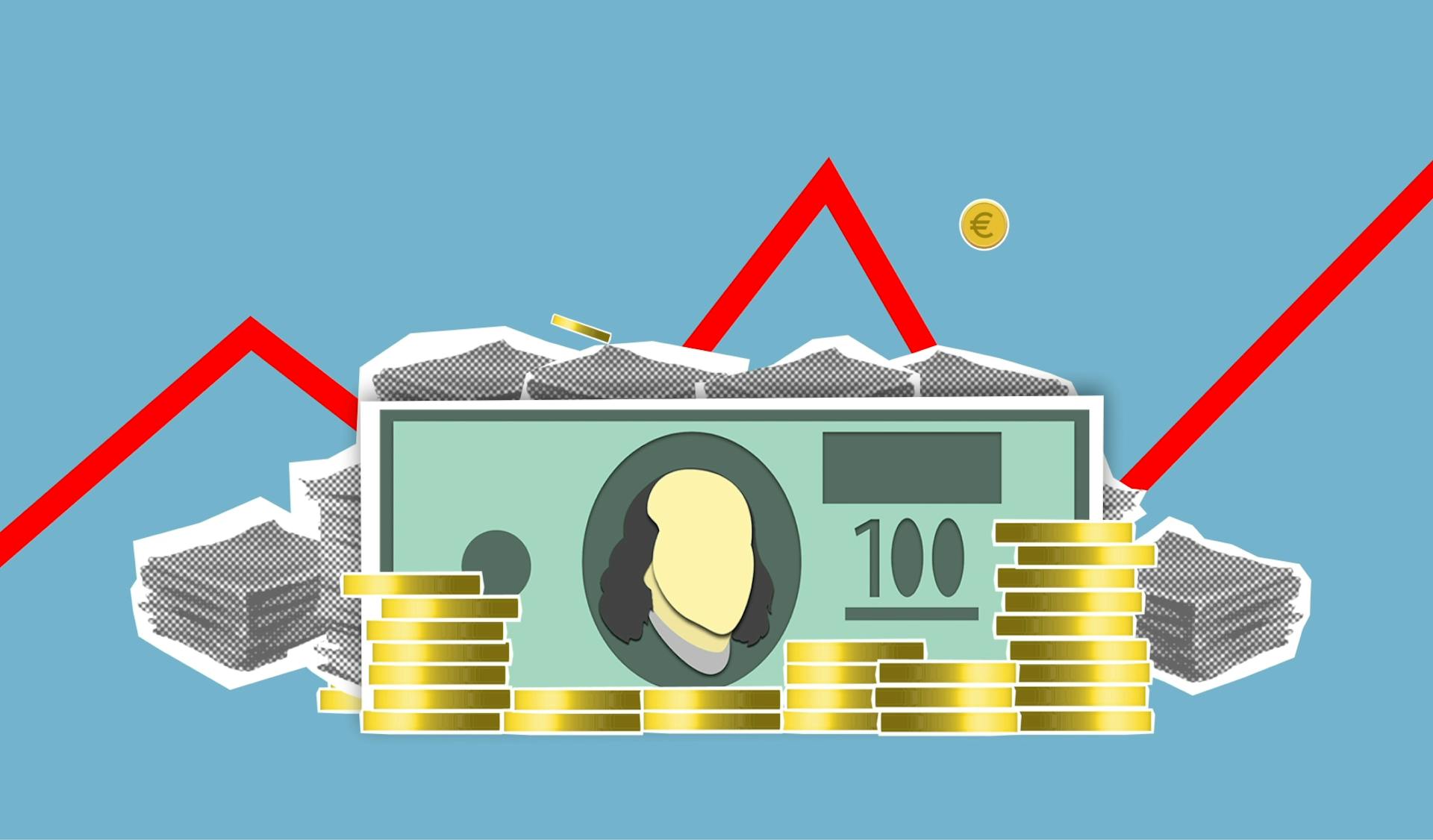
Seed venture capital is a crucial source of funding for startups, providing the necessary resources to turn their innovative ideas into reality. Typically, seed venture capital investments range from $500,000 to $5 million.
Startups often use this funding to validate their business models, build a minimum viable product, and attract early customers. This initial investment can make or break a startup's chances of success.
Seed venture capital firms usually take a 10-20% equity stake in the startup in exchange for their investment. This means that the startup's founders will have to give up some control and ownership of their company.
Startup Funding
Startup funding is a crucial aspect of any startup journey. Seed stage investors are essential for providing the capital and expertise needed to develop ideas, products, and business models.
Seed investors believe in entrepreneurs and their vision, often providing guidance beyond just financial resources. They have connections with industry experts who can provide key insights into creating a successful company.
To raise seed funding, you'll need a solid business plan, a simple and engaging pitch presentation, and a committed team capable of success. This can be achieved by preparing everything you'll need to raise seed money for your startup.
Here are some types of seed funding to consider:
- Friends and family funding: This type of seed funding involves raising money from friends and family members.
- Angel investing: Angel investors are wealthy individuals who provide seed funding in exchange for equity ownership.
- Seed accelerators: These programs provide startups with seed funding, mentorship, and resources to help them grow their businesses.
- Crowdfunding: This type of funding allows startups to raise money from a large number of people, typically through an online platform.
- Incubators: These organizations provide startups with seed funding, office space, and resources to help them grow their businesses.
- Government grants: Some government agencies provide seed funding for startups working on specific projects or in specific industries.
- Corporate ventures: Some big companies set up venture arms to provide seed funding to startups in their industry or complementary field.
- Micro-Venture Capital: A type of venture capital that provides seed funding to new startups and early-stage companies with a small amount of money.
Startup Funding Strategy
Startup funding can be a complex and daunting task, but understanding the different options available can make all the difference. Most entrepreneurs see venture capital as the holy grail of funding solutions, but fewer than 0.05% of U.S. startups ever raise a VC round.
Seed funding is a great alternative, and it can be raised online using equity crowdfunding platforms such as SeedInvest, Seedrs, and Angels Den. This type of funding involves a higher risk for investors since they don't see any existing projects to evaluate, but it can also be more accessible for startups.
There are several types of seed funding, including friends and family funding, angel investing, seed accelerators, crowdfunding, incubators, government grants, corporate ventures, and micro-venture capital. Each of these options has its own advantages and disadvantages.
Here are some key characteristics of each type of seed funding:
Understanding the different types of seed funding and their characteristics can help you make an informed decision about which option is best for your startup.
Government Funding
Government funding is a highly selective type of funding that can be a game-changer for startups. Government funds are often targeted towards youth, with the age of the founder being a key determinant.
These programmes can be particularly beneficial for adolescent self-employment during the summer vacation. The European Commission runs microfinance programmes for self-employed people and businesses with fewer than 10 employees, offering loans under €25,000.
Government programmes are often tied to political initiatives, so it's essential to understand the current political landscape and how it may impact funding opportunities. European SMEs can also benefit from the Eureka programme, which federates SMEs and research organisations, such as universities.
Understanding Investors
Understanding investors is crucial when seeking seed venture capital. Seed stage investors are the lifeblood of new startup companies, providing capital and expertise to develop ideas, products, and business models. They believe in entrepreneurs and their vision, often providing guidance beyond just financial resources.
To find the right seed investor, you should talk to other founders and ask them who has been most helpful to their business. This can help you determine if a prospective investor will add value or friction, and if they can be trusted. Trust is key, and you should think about choosing investors like you'd think about hiring an employee who you can never fire.
Here are some key qualities to look for in a seed investor:
- They provide guidance beyond just financial resources
- They have connections with industry experts who can provide key insights
- They can help you build social proof for larger investors
All Investors Globally
There are thousands of seed investors from all over the globe, making it hard to find the right one for your company. Our directory includes detailed information on each one, including contact details and investment portfolio.
Seed stage investors are essential for any startup journey, providing capital and expertise to help develop ideas, products, and business models. They believe in entrepreneurs and their vision, often providing guidance beyond just financial resources.
You don't need a lead investor to start taking on capital in a seed round. In fact, it's often better to open a SAFE at reasonable valuation and start collecting checks from smaller angels while you're having conversations with larger funds.
Finding the right funding strategy for your startup is crucial. Most entrepreneurs see venture capital as the holy grail of funding solutions, but fewer than 0.05% of U.S. startups ever raise a VC round.
Here are some key things to consider when choosing the right investors:
- Look for investors who can add value to your business, not just provide capital.
- Ask other founders for recommendations and advice on who to partner with.
- Get a sense of what it's like to work with an investor before signing a check.
- Choose investors like you'd hire an employee you can never fire.
Research Investors
Researching investors is a crucial step in securing seed funding for your startup. It's essential to assemble a target list and research each investor before your pitch window.
You should check if they've invested in similar companies, which can be found on Crunchbase and their LinkedIn profiles. Investors typically look for large return multiples on any investment, often over 100x, and evaluate based on the caliber of the team, the size of the market, and the strength of the early product.
To get a sense of their investment philosophy, check their fund and personal website. You can also ask for references from other founders who have worked with them.
Here's a simple checklist to help you organize your outreach:
Remember, you're not just taking a check from these investors; you're inviting them into your company for the long haul. Think of choosing investors like hiring an employee you can never fire – you want to partner with people who will add value and trust to your business.
Start Small for Social Proof
Starting small is a key strategy when it comes to building social proof for larger investors. This means opening a SAFE (simple agreement for future equity) at a reasonable valuation and collecting checks from smaller angels while having conversations with larger funds.
It's often better to start small than to wait for a lead investor. In fact, it's often better to start small than to try to raise a large amount of capital all at once. This approach allows you to take on capital and build social proof for the larger investors.
You don't need a lead investor to start taking on capital in a seed round. According to Example 5, "You don’t need a lead investor to start taking on capital in a seed round. In fact, it is often better to open a SAFE (simple agreement for future equity) at reasonable valuation and start collecting the checks of smaller angels while you are having conversations with larger funds."
Having a mix of a few six-figure customers and small-mid size customers in the $50K ARR range demonstrates repeatability and flexibility of your early go-to-market strategy. This is according to Example 4, "Typically, you’re not looking for a single large elephant or two. Having a mix of a few six-figure customers and small-mid size customers in the $50K ARR range demonstrates repeatability and flexibility of your early go-to-market strategy."
To give you a better idea of what social proof looks like, here are some key milestones to aim for in the Seed Phase:
Remember, the primary goal of the Seed Phase is to find and demonstrate product-market fit. By achieving these milestones, you'll be well on your way to building social proof for larger investors.
Preparing for Funding
Preparing for Funding is a crucial step in securing seed venture capital. To increase your chances of success, you should have a solid business plan in place, which includes a clear written memo and/or deck that outlines your business model and vision.
Developing a business plan takes time and effort, but it's essential to demonstrate to investors that you've thought through the road ahead and have a clear understanding of your market and product. A business plan should include your market size, customer needs, and go-to-market strategy, among other key elements.
Before approaching investors, make sure you have a functional prototype and a small team in place. You don't need a salesperson at this stage, but having a numbers person who can walk through the financial picture in the business plan is helpful.
Here are some key milestones to focus on before raising seed capital:
- Team: hiring the core team
- Traction: reaching a traction level where the business has 10+ customers and $1M of ARR
Remember, your own conviction across proof of commitment, proof of work, and proof of insight might be the single most predictive variable in raising capital. If you truly believe in your opportunity, you will likely be able to convince someone to give you money.
Develop a Business Plan
Developing a business plan is crucial before seeking seed funding. A solid business plan will give you a clear direction and help you communicate your vision to potential investors.
You may not have a functional prototype at this point, but having some idea of who will want your product, how big the market is, and how much capital you need to reach your next major milestone is essential. Without a business plan, your odds of raising seed money are pretty slim.
You don't need a detailed analysis of the market and several years of projected revenue and costs for a typical angel investor, but you should have a clear written business plan and presentation for your startup.
A business plan makes you think about what you are trying to do and what it will take to get there, which will make investors feel confident and excited about getting behind a compelling product and into a market that interests them.
Here are the essential elements of a business plan for a startup:
- A solid business plan for your product
- A simple, engaging pitch presentation
- A committed team capable of success
Remember, you don't have to be right about all this, and you probably won't be, but you'll need to persuade your potential investor about your business' potential.
What to Prove to Investors Before Raising
Preparing for funding requires a solid understanding of what you need to prove to investors. You've got to demonstrate that you have a strong business plan, a simple and engaging pitch presentation, and a committed team capable of success.
Before raising, you should have taken the following steps. Proof of commitment is essential, as you need to have left your old job and be fully committed to being a founder. This shows investors that you're serious about your venture.
Proof of work is also crucial, involving customer development and research on the problem to give you total conviction in the opportunity. You should speak with buyers to deeply understand their pain point and offer them your solution in the most realistic way possible.
Proof of insight is the final piece of the puzzle, where you have some expression of your thesis. This could be a clear written memo and/or deck that outlines what you plan to build. Your own conviction across all three of these points might be the single most predictive variable in raising capital.
Here's a breakdown of the three key areas to focus on:
Your goal is to convince investors that you're building a company that can establish product-market fit and eventually raise a series A or provide a solid return for early investors.
Prepare (Well-Crafted) Materials
Having well-crafted materials is crucial when preparing for funding. A minimal deck and/or memo with a simple budget is all you'll need at this stage.
The quality of your content matters a lot. The better crafted your materials are, the more persuasive they will be, and the more likely they will result in capital. You should have all your materials polished and ready to go before your pitch window.
Craft doesn't have to mean visual finesse; it's more important for the deck to be substantive than beautiful. Airbnb's seed deck is a good example of this. Rippling wrote the gold standard for a memo.
Remember to strive for honesty, not just optimism. Tomer at Gusto advises, "Show your honest assessment of your scorecard", while Dylan of Figma says, "Be honest about what you know and don't know."
A good warm intro is essential. Siqi Chen from Runway says, "The most important thing is to make sure your warm intro is from someone genuinely excited about you." This can help you break through the noise and get noticed by investors.
If you can't find a warm intro, craft a good cold email. These don't convert as well, but there is almost zero downside to sending one.
Follow Up Sparingly with Investors
Follow up with investors sparingly, as interested investors will typically drive the process. If you do have to follow up, do it in a non-needy way.
In follow-ups, always mention some positive development, such as revenue growth, new hires, or feature releases. This shows that your company is moving forward and makes investors more likely to invest.
Having an angel or existing investor "vouch" for your company can be a powerful way to get lead checks. This flips the power dynamic and shows that your company has credibility with other investors.
Raising Capital
Raising capital for your seed venture can be a daunting task, but understanding your options is key. Most entrepreneurs see venture capital as the holy grail of funding solutions, but fewer than 0.05% of U.S. startups ever raise a VC round.
You have various startup fundraising options, and some might be more advantageous for your business. For instance, you can consider friends and family funding, angel investing, seed accelerators, crowdfunding, incubators, government grants, corporate ventures, or micro-venture capital. Each of these options has its pros and cons, so it's essential to weigh your choices carefully.
To determine the right funding strategy for your startup, consider the following factors: what kind of capital to raise, when to raise it, and what you need to get it. This will help you decide which option is best for your business.
Types of Funding
Raising capital for your startup can be a daunting task, but understanding your options is key to making informed decisions. Most entrepreneurs see venture capital as the holy grail of funding solutions, but fewer than 0.05% of U.S. startups ever raise a VC round.
There are other startup fundraising options, including seed funding, which can be raised online using equity crowdfunding platforms such as SeedInvest, Seedrs, and Angels Den. Seed funding involves a higher risk than normal venture capital funding since the investor doesn't see any existing projects to evaluate for funding.
Seed funding can come from various sources, including friends and family, angel investors, seed accelerators, crowdfunding, incubators, government grants, corporate ventures, and micro-venture capital. Friends and family funding involves raising money from friends and family members, while angel investing involves wealthy individuals providing seed funding in exchange for equity ownership.
Seed accelerators provide startups with seed funding, mentorship, and resources to help them grow their businesses. Crowdfunding allows startups to raise money from a large number of people, typically through an online platform. Incubators offer startups seed funding, office space, and resources to help them grow their businesses.
Here are some examples of types of seed funding:
- Friends and Family Funding
- Angel Investing
- Seed Accelerators
- Crowdfunding
- Incubators
- Government Grants
- Corporate Ventures
- Micro-Venture Capital
These options can provide the necessary funding to help your startup get off the ground, and understanding the pros and cons of each can help you make the best decision for your business.
Raising Series A Venture Capital
Raising Series A Venture Capital can be a critical milestone for your early-stage enterprise software company. This typically occurs after you've successfully secured Seed funding and have a proven product-market fit.
The Series A round is often used to scale your business, expand your team, and further develop your product. It's a significant step towards establishing your company as a serious player in the market.
The Series A valuation is typically higher than the Seed valuation, as investors are willing to pay a premium for a company with a proven track record. According to the Field Guide, the Series A valuation can range from 5 to 10 times the Seed valuation.
To approach investors and close the deal, you'll need to refine your pitch and demonstrate a clear path to growth. This includes highlighting your unique value proposition, competitive advantage, and potential for scalability.
Funding Amount
Raising the right amount of capital is crucial for your startup's success. Typically, seed rounds are around $2M to $4M, although some companies may require more or less.
The median time from seed to Series A is 23 months, according to Carta. This is because it usually takes this long to hit product-market fit and raise a Series A.
You should aim for a 24- to 36-month runway, building in a 25% buffer for unexpected expenses. This will give you a safety net and ensure you can reach your milestones.
Most seed rounds involve selling around 15% equity at a post-money valuation of around $20M in the San Francisco Bay Area. It's better to be oversubscribed than to fail to reach your target, so aim for a slightly higher amount than you need.
Taking on too little funding can limit your company's performance, but taking on too much can have its own downsides, such as reducing urgency and innovation.
Here are some general guidelines for seed round sizes:
Remember, the right amount of capital will vary depending on your company's specific needs and goals. It's essential to find the right balance to ensure your startup's success.
Valuations and Growth
Valuations and growth are closely tied to fundraising, especially for private companies. Valuations increase at the time of fundraising, a crucial fact for founders to understand.
Most entrepreneurs view venture capital as the holy grail of funding solutions, but the reality is that fewer than 0.05% of U.S. startups ever raise a VC round. This means there are other options available that might be more suitable for your business.
Valuations can be a major hurdle for startups, especially when it comes to fundraising. Founders need to understand that valuations increase at the time of fundraising, and this can impact their company's growth.
There are alternative funding strategies that might be more beneficial for your startup. For example, you might consider non-venture capital options, such as crowdfunding or bootstrapping. These options can help you maintain control and avoid dilution.
It's essential to find the right funding strategy for your startup, taking into account your business needs and goals. By understanding your options and making informed decisions, you can navigate the funding landscape with confidence.
Deciding on Funding
Conventional wisdom suggests you should raise a seed round when you believe you have what it takes to build a company that can establish product-market fit.
A solid business plan, simple pitch presentation, and committed team are essential to prepare for a seed round. This will help you demonstrate your company's potential to investors.
Seed funding is generally one of the first steps investors offer to get startups on their feet before they become fully operational. It involves a higher risk than normal venture capital funding, with investments typically ranging from tens of thousands to hundreds of thousands of dollars.
You can raise seed funding through various channels, including friends and family funding, angel investing, seed accelerators, crowdfunding, incubators, government grants, corporate ventures, and micro-venture capital.
Should My Company Raise Capital?
Raising capital can be a daunting prospect for many entrepreneurs. Most people think that venture capital is the only option, but the truth is that fewer than 0.05% of U.S. startups ever raise a VC round.
Venture capital might not be the best fit for your company, and there are other options to explore. You need to decide what kind of capital to raise, when to raise it, and what you need to get it.
Here are some key considerations to keep in mind:
- Funding options: There are other startup fundraising options beyond venture capital, such as equity and ownership.
- Startup Leadership: You'll need to consider how raising capital will affect your leadership and ownership structure.
In the end, the decision to raise capital will depend on your company's specific needs and goals.
How to Maximize a Great Round Outcome
To maximize a great round outcome, focus on the post-money valuation and whether there is a board.
The post-money valuation is the value of the startup, including the capital raised, and it's essential to negotiate this term carefully. Third-party sources like AngelList or Carta, fellow founders, and advisors can help you triangulate a good range for your valuation.
Most seed rounds are done on SAFEs, which have the benefit of speed because you don't need to negotiate terms other than the valuation, and there are typically no lawyers involved.
Creating a board with an outside investor is less common at seed, so it's usually preferable to avoid giving up a board director seat unless someone truly remarkable wants to join your board.
To create FOMO among investors, you need to get a yes from other investors, which will make it more likely that they'll invest too. This is the most surefire way to get a yes from many investors.
The Funding Process
Seed funding is generally one of the first steps investors offer to get startups on their feet before they become fully operational.
Seed funding involves a higher risk than normal venture capital funding since the investor doesn't see any existing projects to evaluate for funding.
The investments made are usually lower, in the tens of thousands to the hundreds of thousands of dollars range, as against normal venture capital investment, which is in the hundreds of thousands to the millions of dollars range, for similar levels of stake in the company.
Investors make their decision whether to fund a project based on the perceived strength of the idea and the capabilities, skills, and history of the founders.
Seed funding can be raised online using equity crowdfunding platforms such as SeedInvest, Seedrs, and Angels Den.
Negotiating and Announcing
Negotiating a seed round can be a complex process, but understanding the key terms can make it more manageable. The post-money valuation is the value of the startup, including the capital raised, and third-party sources like AngelList or Carta can help you determine a good range for your valuation.
Most seed rounds are done on SAFEs, which have the benefit of speed because you don't need to negotiate terms other than the valuation, and there are typically no lawyers involved. Priced rounds, on the other hand, take a little longer to close and cost more, but they make the cap table and dilution more clear for founders.
Giving up a board director seat at seed is usually not a good idea, unless someone truly remarkable wants to join your board. Instead, offer a board observer seat when an investor asks for a director seat.
You Don’t Have a Term Sheet Until You Have One
Verbal commits are not term sheets, and a term sheet is not just a verbal agreement. In seed rounds, a term sheet is commonly a SAFE with a post-money cap.
A term sheet is a written document that outlines the terms of the investment, including the valuation, equity, and other key provisions. It's a crucial step in securing funding, and it's essential to have a term sheet in place before moving forward.
You don't actually have a commitment from an investor until you have a term sheet or a SAFE. This carries through to every round you raise.
How to Negotiate Terms in a Raise
Negotiating terms in a seed raise can be a daunting task, but understanding the basics can make all the difference. The most important thing to consider is the post-money valuation, which is the value of the startup including the capital raised.
This can be determined by consulting third-party sources like AngelList or Carta, fellow founders, and advisors to get a good range for your valuation. Investors are primarily solving for ownership, which is slightly different than price.

Most seed rounds are done on SAFEs, which have the benefit of speed because you don't need to negotiate terms other than the valuation, and there are typically no lawyers involved. This makes the process much faster and less complicated.
A minority of seed rounds are "priced", meaning investors buy preferred shares immediately. This can take a little longer to close and cost more, but it makes the cap table and dilution more clear for founders.
It's also worth considering the role of the board, as creating a board with an outside investor is less common at seed. Instead, offer a board observer seat when an investor asks for a director seat. This way, you can still get input and guidance without giving up a director seat.
Here are some key terms to focus on in a seed raise:
By understanding these key terms and focusing on the post-money valuation, you can navigate the negotiation process with confidence.
Should I Announce a Funding Round?
Announcing a funding round can be a significant decision for your startup. It can help validate your company to potential customers and hires, and boost your brand value.
Raising a round of funding is a big deal for most early-stage companies, and announcing it can send a positive signal to potential customers and hires. However, it can also alert the competition, which might inspire them to raise funds.
The decision to announce a funding round depends on your company's current challenges. If announcing the fundraise can help address one of your biggest challenges, do it. If not, it's a distraction.
According to Josh Miller from The Browser Company, you should ask yourself, "What are the three biggest challenges for the company right now?" If announcing the fundraise can help with one of them, go for it.
Announcing a funding round can also have a downside. It might inspire venture capitalists to fund similar things, and your competitors to raise funds. This is a con to consider when deciding whether to announce.
Here are some factors to consider when deciding whether to announce a funding round:
Frequently Asked Questions
Do you pay back seed money?
Seed money is typically repaid through conversion into company shares, not cash repayment. Understanding the repayment terms is crucial for startups considering seed funding.
What is seed vs angel vs VC?
Seed funding typically involves smaller investments from individual investors (angel funding) or small VC firms, while Venture Capital (VC) investments come from larger firms with bigger check sizes
Sources
- https://vc-mapping.gilion.com/venture-capital-firms/seed-investors
- https://www.lightercapital.com/blog/what-is-seed-money-how-to-find-angel-investors
- https://en.wikipedia.org/wiki/Seed_money
- https://www.unusual.vc/articles/how-to-raise-seed-and-series-a-capital
- https://www.lennysnewsletter.com/p/raising-a-seed-round-101
Featured Images: pexels.com


